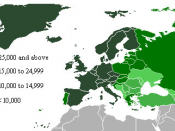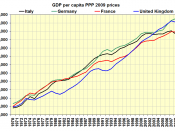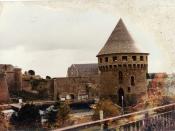FRANCE
Overview
France is located in Western Europe, between the Mediterranean Sea to the southeast and the Bay of Biscay and English Channel to the north and west. France also has several overseas regions scattered around the world: French Guiana, Guadeloupe, Martinique, Mayotte, and Reunion. Metropolitan France shares borders with six neighbors: Belgium and Luxembourg to the north, Germany and Switzerland to the east, Italy to the southeast and Spain to the southwest. Occupying the total land area of 643,801 sq kilometers, it is the largest country in Western Europe, bigger than Spain, Germany and the United Kingdom. Its strategic location at the heart of Europe and its extensive network of modern communications, make France a real hub in Europe. Since 1950, France has experienced rapid urbanization and nowadays 85 percent of the population lives in cities. The capital and the largest city is Paris with 10.41 million people. Other major cities are Marseille, Lyon, Lille, Nice, and Strasbourg (cia.gov).
Political development
France has been a republic with a semi-presidential system since 1958. The semi-presidential system means that the executive power is split between a president and a prime minister contingent on a majority in the legislation. For this reason, France's semi-presidential system has a dual executive authority in which presidential power is directly correlated to political control of the parliament (Kesselman, Krieger, and Joseph 123). France has a multiparty system (more than two parties capture a significant share of the popular vote). The major political parties include the center-right Union for a People's Movement (Union pour un mouvement populaire, UMP) and the center-left Socialist Party (Parti socialiste, PS) along with other smaller, allied parties. The party currently in power is the center-right UMP, led by the President Nicolas Sarkozy. France has had a long...


